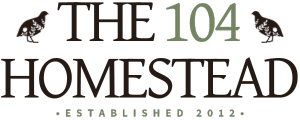The Best Firewood for Your Wood Stove or Fireplace
Are you looking for excellent firewood to burn this fall? Learn more about the best firewood to burn based on your situation here.
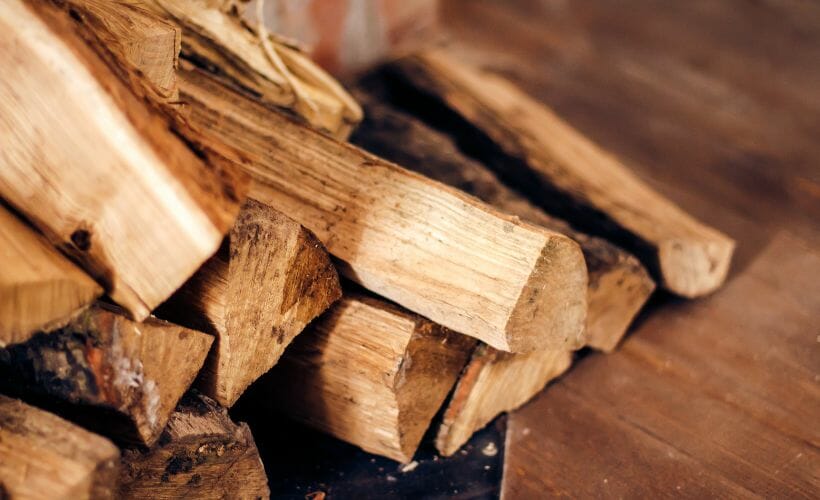
Wood is a fuel. It looks, smells, and burns differently from other substances consumed for heat, but wood is a fuel, just the same. Burning wood is one way to heat a home, power a home’s central heating system, and stay warm on a chilly winter’s evening. Here are a few suggestions on the best firewood for burning.
Do you need firewood on a budget? Check out where you can get free wood for your stove.
Best Hardwood for Burning
A wood will be classified as hardwood if the tree’s seeds have a coating. These coatings can either take the shape of a fruit or a shell. Examples include oak, cherry, maple, or mahogany.
Hardwoods tend to give you a hotter and longer burn time. These woods have the least pitch and sap and are generally cleaner to handle.
Beech
Beech is an excellent choice for firewood since it produces little smoke, sparks, and low creosote buildup. The wood is hard and dense, making it a good choice for long-lasting fires. Beech also has a low moisture content, so it burns hot and provides good heat output. A disadvantage is that it can be heavy because it is so dense and may be difficult to work.
Birch
Birch is a good firewood to burn because it burns well and produces moderate heat. It splits fairly easily and dries fast once split. Birch bark makes a great fire starter because of its similarity to paper. Because birch will burn well even if damp, there is a higher risk of creosote build-up if you need to use it wet. You can avoid creosote by seasoning your birch for at least 12 months. Make sure to keep birch off the ground because it is prone to mold if allowed to stay damp.
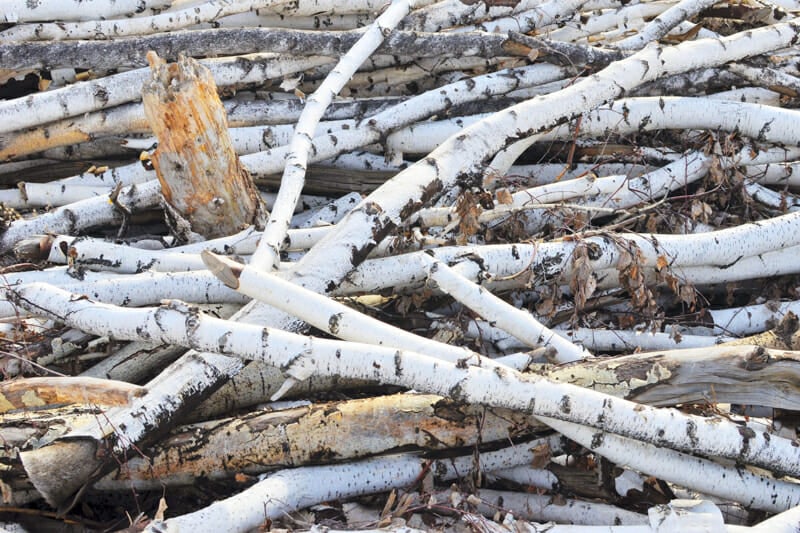
Black Walnut
Black Walnut is excellent firewood with reasonable heat production and fast seasoning time. It is easy to split and smells great. White Walnut wood is softer than Black Walnut but is still relatively dense.
Cherry
Cherry wood is one of the most popular woods to burn in fireplaces due to its pleasant, non-smoky aroma. It is easy to split, tends to burn at medium heat, and does not produce much smoke. Cherry burns hot but produces less heat than oak or maple firewood. This is because cherry contains less sap than other woods.
Cottonwood
Cottonwood trees are classified as hardwood even though the wood is relatively soft and not very dense. Cottonwood firewood has a low BTU rating, but that doesn’t mean you can’t use it for firewood; it just means it doesn’t supply as much heat as other popular hardwoods.
Elm
Due to Dutch elm disease, it’s not uncommon to find standing dead elm trees everywhere. Although it doesn’t provide the heat output that hardwoods like oak and hickory do, it is still an acceptable wood for burning. If you don’t let Elm wood become fully seasoned, it can produce a ton of smoke because this firewood absorbs a lot of water. When fully seasoned, though, Elm should only produce a moderate amount of smoke.
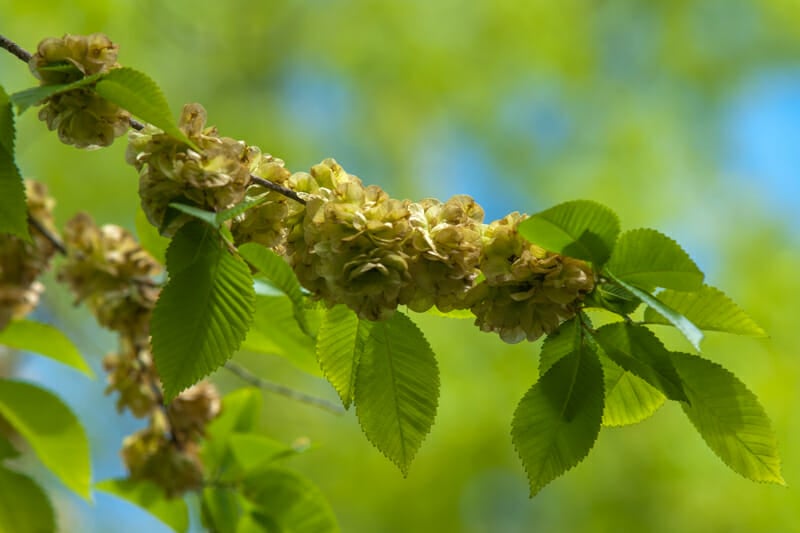
Hickory
Hickory is a very dense, heavy, straight-grained tree. All of the varieties of Hickory work well as firewood, but they require a seasoning time of at least one year. If not seasoned for long enough, the wood won’t burn efficiently.
Mountain Mahogany
Mountain mahogany is a highly dense hardwood that makes excellent firewood. It produces slow-burning coals and gives off hotter heat than most hardwood varieties.
Red Oak
Red Oak has a high heat production and provides a decently long fire. It is also abundantly available. One disadvantage of red oak as firewood is that it takes a while to dry.
Rock Maple
Although it has a lower density than other hardwoods, Rock Maple is easy to burn, burns cleanly, and splits well. Rock Maple is extremely affordable and easily accessible. The main disadvantage of using Rock Maple for firewood is that it is more expensive than other types of wood. It also produces more creosote than other types of hardwood.
Sugar Maple
Sugar Maple burns long, slow, and steady, and since it can be found just about everywhere in the continental United States, it’s a smart choice for fireplaces and wood stoves. Sugar maples are often used for making syrup, but did you know there are other trees that can be tapped for syrup as well? Just be aware that Sugar Maple’s high sap content can cause creosote build-up in chimneys.
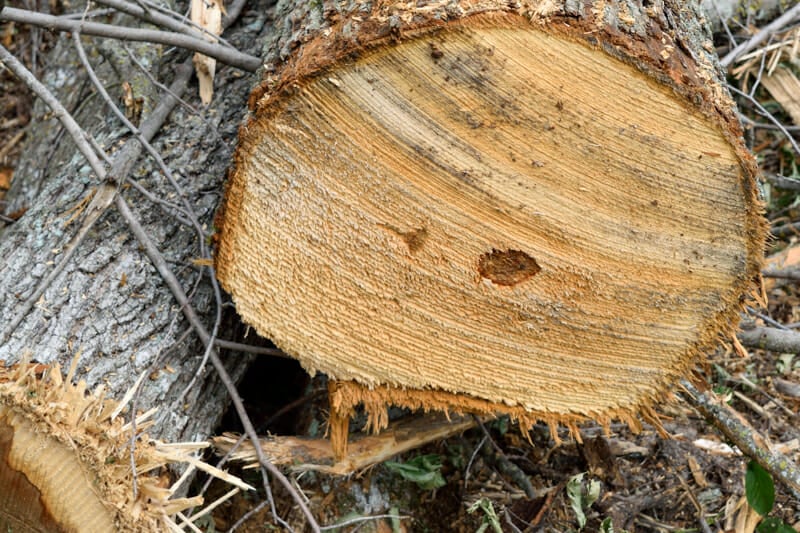
White Ash
White Ash is one of the best types of firewood to burn. It is a clean burning hardwood that produces an adequate amount of heat. White Ash can be moderately difficult to split, especially the larger diameter rounds with knots in the wood.
White Oak
White oak doesn’t just produce heat, it manages to stay hot for longer periods of time. Because White Oak is relatively drier, when seasoned correctly and given the time to dry fully, it will burn cleaner than other woods, creating less smoke. One of the primary disadvantages of White Oak firewood is that it produces a lot of sparks.
Best Softwood for Burning
A wood will be classified as a softwood if the seeds don’t have any coating and are instead dropped to the ground and left to the elements. Examples include pine, fir, spruce, larch, and cedar.
Softwood can produce a may burn quicker, and you will probably go through a larger volume of wood in a short period of time, but it’s also cheaper and often easier to acquire.
Alder
Seasoned alder firewood burns relatively fast but creates a hot fire with decent coals. Many people choose to burn the wood during the fall or spring when the outside temperatures are moderate. Or you can mix the wood in with other dense hardwoods like oak, maple, or beech.
Bigleaf Maple
Bigleaf Maple has considerably higher BTUs than other softwoods. It starts decently, burns for a long time, and leaves a great long-lasting bed of coals.
Cedar
Cedars are the next best thing to a resin-soaked pine knot for starting wood fires, and cedar makes for a great natural kindling source, but it offers relatively low heat output compared to most other common firewood types.
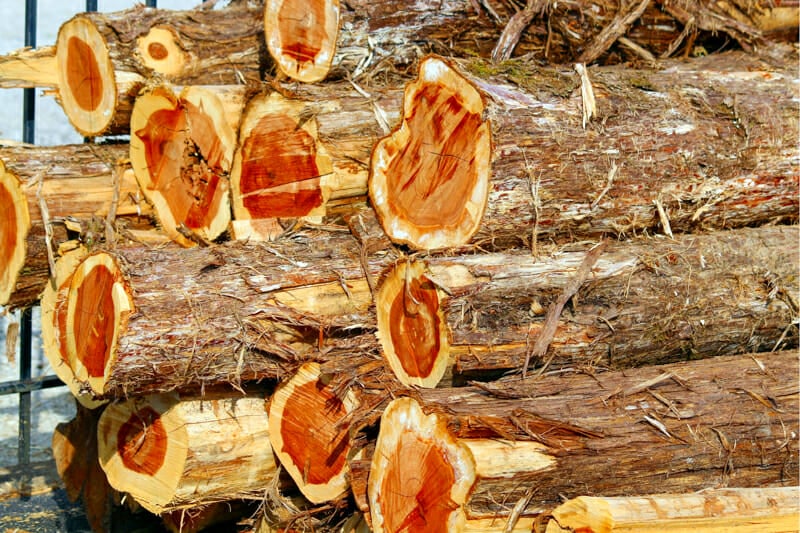
Douglas Fir
Douglas fir firewood is a great all-around, user-friendly firewood choice. It produces decent heat and splits easily with only moderate sparks.
Larch/Tamarack
Larch (aka Tamarak) is a “hard softwood” that is even harder than some genuine hardwood species. It won’t burn the longest or the hottest, but if you’re cutting the wood yourself, you’ll love its other features. It dries out after splitting quickly and burns hot.
Pine
Pine is a “hot” topic of debate in the wood-burning community. Pun totally intended. Generations have passed down that you should never burn pine indoors, but those beliefs have been debunked. Learn more here.
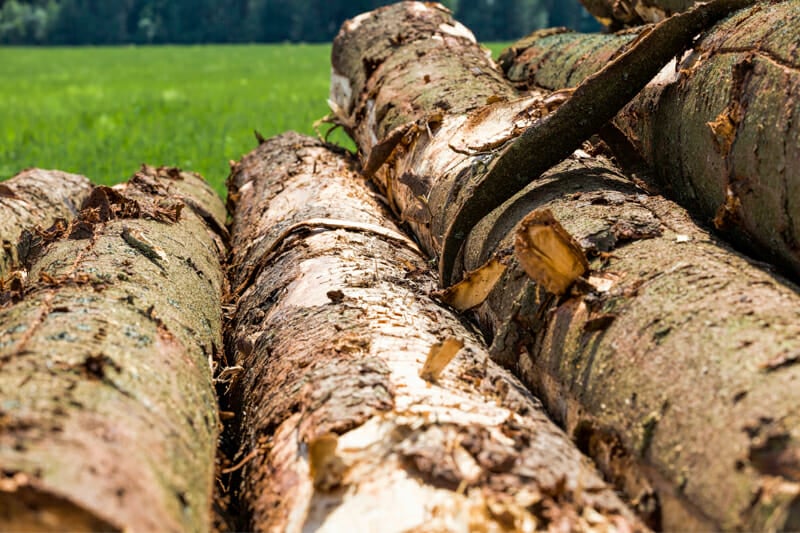
It is a wonderful fire starter, particularly because it has so much resinous sap. This sap acts as a good ignitor, helping you to get a fire started quickly and easily.
Poplar
Poplar is good for firewood because it lights quickly when dry and will warm your house well during the shoulder seasons. Poplar is a relatively quick-burning firewood.
Red Maple
Red Maple produces fewer BTUs than some other softwoods. It can provide moderate heat for some hours, which can be suitable for autumn but not for harsh winters.
Redwood
Redwood is average firewood that has low heating efficiency, burns fast, and sparks excessively. However, it is easy to split, quick to season, and lights easily.
Spruce
Spruce firewood is relatively easy to split and burns quickly. It has a relatively low BTU but since spruce is readily available, it’s not a bad choice when it comes to looking for wood to burn.
Comparing the Best Firewood for Burning
Click here to access a printer-friendly and easy-to-read version of the comparison guide for the best firewood to burn.
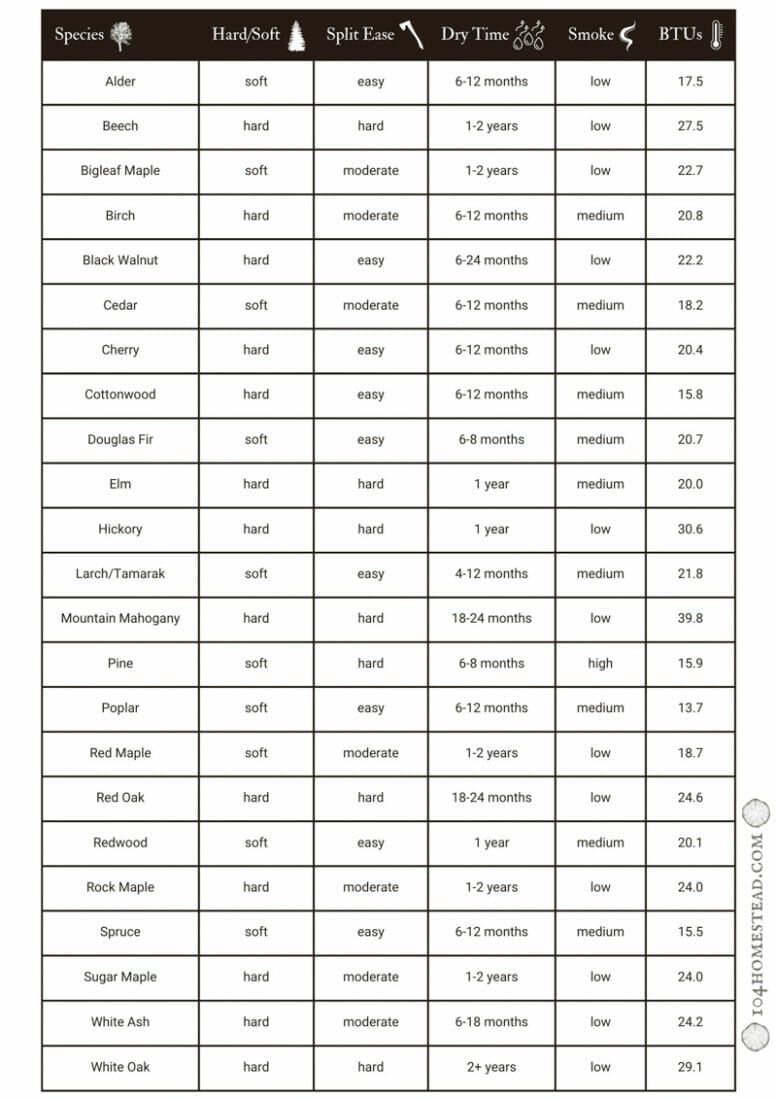
Make Sure Your Wood Is Dry
To season firewood properly, stack it in a place where the sun can warm it, and the wind can blow through it. A single row exposed to the sun and prevailing winds are best because the sun heats and evaporates the water from the wood, and the wind whisks it away.
Each wood has its own dry time, as indicated in the chart above.
Damp wood burns at a cooler temperature, resulting in incomplete combustion, more smoke, and dangerous creosote build-up in the chimney (a fire hazard). Excess wood smoke can decrease air quality both inside and outside the home, contributing to breathing issues.
A moisture meter will tell you exactly how seasoned your firewood is. See how to use a moisture meter.
Woods to Avoid
Don’t burn driftwood in your fireplace. Driftwood is loaded with salt, and the chlorine in salt mixes with wood compounds during burning to release a toxic chemical, one that’s been linked to cancer. Driftwood can, however, be burned in a burn barrel.
Don’t burn treated, painted, or sealed wood in your fireplace. Treated, painted, or sealed wood will release chemicals during burning, many of which are cancer-causing chemicals.
Don’t burn green (wet) wood in your fireplace. As we talked about earlier, green wood contains a lot of moisture, which will lead to cooler fires, cooler flues, more smoke, and more creosote. This could lead to a chimney fire.
Frequently Asked Questions
If you’ve found value in this blog post and enjoyed reading it, why not share it with your Pinterest community? Pin the image below and spread the love!
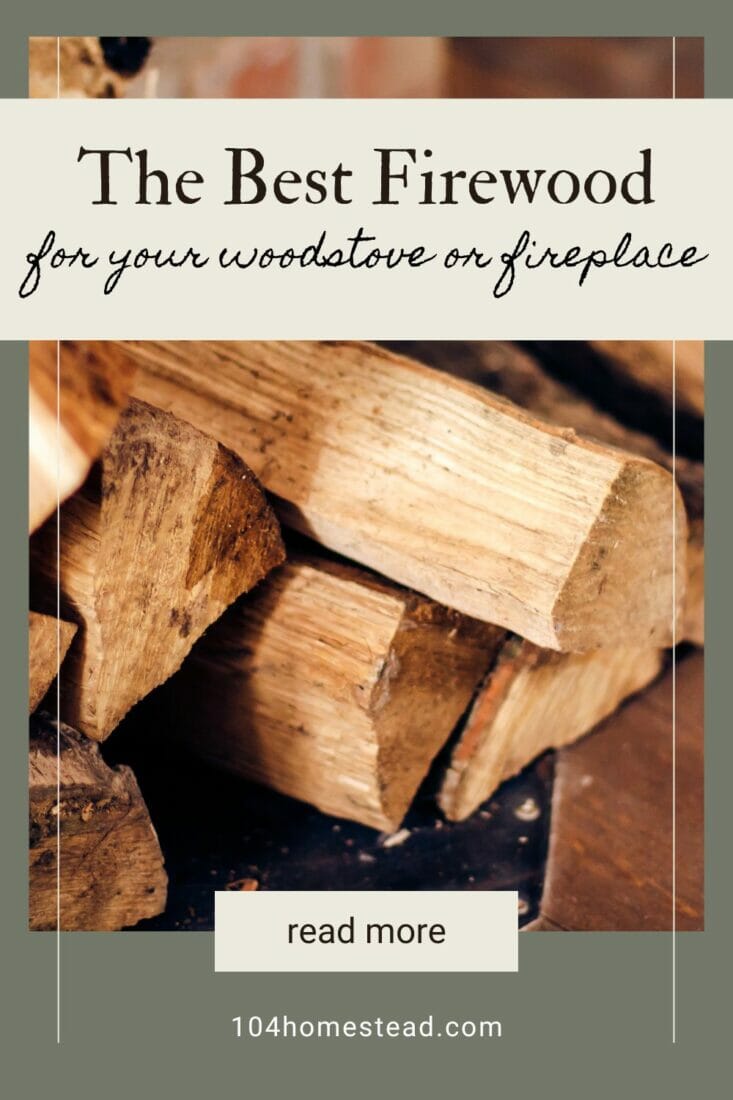
Choosing the right firewood for your wood stove or fireplace is crucial for efficient heating and a satisfying burning experience. By considering factors such as heat output, burn time, smoke production, and seasoning requirements, you can make an informed decision and enjoy cozy fires throughout the fall and winter seasons. Remember to prioritize safety and proper wood seasoning to avoid potential hazards.
What is your favorite type of firewood to burn in your wood stove or fireplace? Share your experiences and insights in the comments below!
